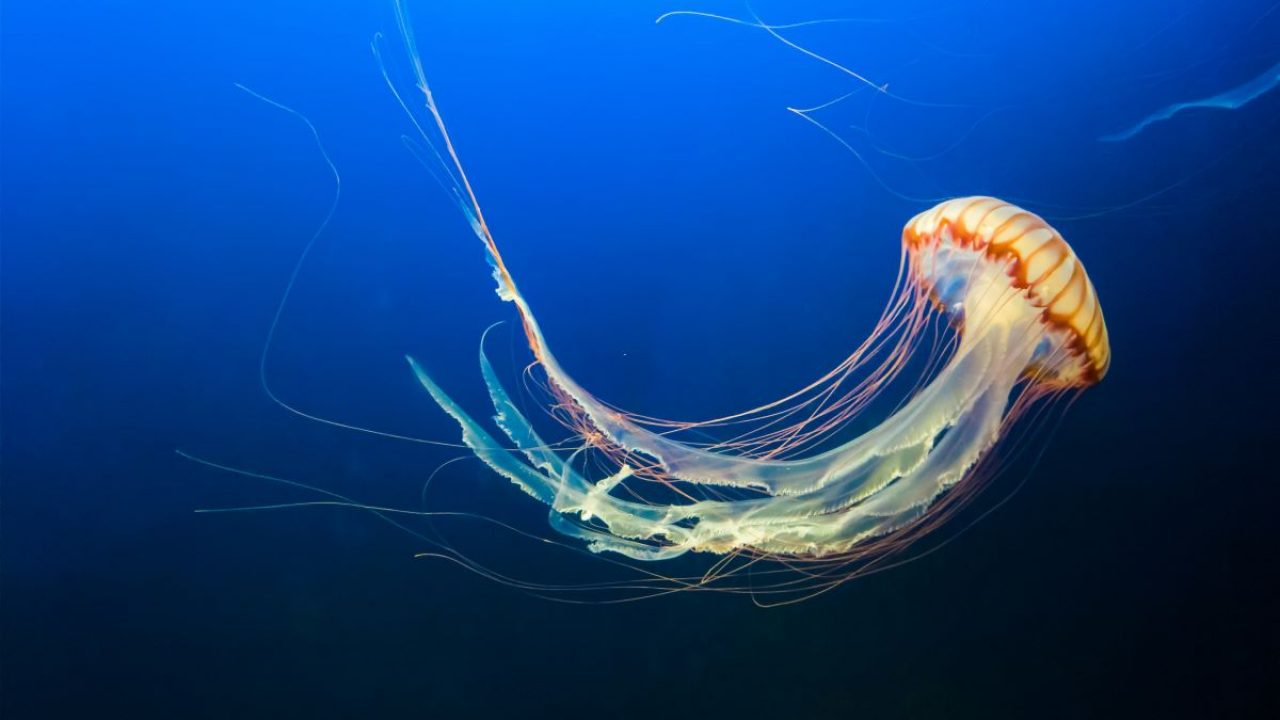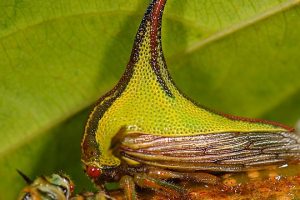
© Unsplash
Delve into the captivating world of jellyfish to uncover their adorably complex existence alongside mesmerising bioluminescence and potent stings.
Musa Sattar, London, UK
Imagine ethereal umbrellas or bells adrift in azure waters, each gracefully pulsating with life. Welcome to the mesmerising world of boneless, ‘brainless’, and bloodless jellyfish, where these gelatinous creatures defy the imagination and beckon us to explore their delicate yet complex existence.
But don’t be fooled by their name; jellyfish are not actually fishes but invertebrates with 95%-98% of their bodies made up of water. Hence, scientists have recently started using the umbrella term ‘sea jellies.’
Jellyfish, ancient denizens of the sea, have been gracefully navigating the oceans for over 500 million years. Despite their seemingly simplistic form, with over 2,000 different types known worldwide, jellyfish possess survival strategies that rival the most sophisticated of organisms.
From the shores of the UK to the tropical shallows, jellyfish manifest in a kaleidoscope of shapes, colours and sizes. While most boast bell-shaped bodies ranging from a mere two centimetres to a staggering two metres in diameter, each species possesses its own unique allure. With radial symmetry akin to the segments of an orange, jellyfish exude an otherworldly charm that captivates the imagination.
Members of the invertebrate kingdom, jellyfish navigate the watery realm with grace. Their curved bodies house a network of tentacles and oral arms. These delicate appendages, coated in a thin layer of mucus, serve as both tools for hunting and defence mechanisms.
While their mesmerising grace captivates us, it’s essential not to overlook the strong defence mechanisms of jellyfish. Armed with venomous stingers known as nematocysts, they fend off predators and assert their dominance in the vast expanse of the ocean. These microscopic harpoons, nestled within their tentacles, inject potent toxins into unsuspecting prey, ensuring their survival in the competitive realm of the ocean. Yet, even in their defensive prowess, there is a poignant beauty that underscores the intricate balance of nature.
Their diversity is staggering. Among the vast array of jellyfish species, the lion’s mane stands as a titan of the sea, its tentacles stretching over thirty metres in length, surpassing even the mighty blue whale in grandeur. Meanwhile, the upside-down jellyfish cleverly harnesses the power of photosynthesis, hosting algae on its underside to fulfil its nutritional needs.
Some jellyfish, like the crystal jelly, emit an iridescent glow, illuminating the darkness of the ocean depths. They are propelled by a symphony of fluid dynamics that inspires innovation in underwater propulsion systems and robotics.
But perhaps the most enigmatic of all is the immortal jellyfish, Turritopsis dohrnii, a marvel of biological resilience. Capable of reverting to a juvenile state when faced with adversity, this apparently immortal creature defies the constraints of time, embodying the perpetual cycle of life and death. When faced with physical harm or even hunger, they take a leap back in their development process, transforming back into a polyp phase and attaching to coastal reefs. In a process that looks remarkably like immortality, the regenerated polyp colony eventually produces and releases medusas (the second structural form and reproductive stage) that bear genetic resemblance to the adult jellyfish. Hence the name ‘immortal jellyfish.’ Its eternal cycle of rebirth challenges our understanding of ageing and mortality, inviting us to ponder the mysteries of life and death. As an expert on jellyfish, Dr Lisa-ann Gershwin, Director of Marine Stinger Advisory Service, said about this particular feature of the jellyfish, ‘This was a real mind blower for all of us…It’s one of the most amazing discoveries of our time.’
While most jellyfish lead solitary lives, drifting aimlessly through the ocean currents, they occasionally converge in massive gatherings known as blooms. These spectacular displays, born from a surge in population, paint the seas with a mesmerising tapestry of gelatinous beauty.
Recent studies have unveiled surprising insights into the cognitive abilities of jellyfish. Despite lacking a centralised brain, these captivating creatures exhibit behaviours indicative of learning and memory. Their sensory prowess and adaptive responses challenge conventional notions of intelligence, prompting us to re-evaluate our understanding of consciousness in the natural world.
From their ancient origins to their enigmatic behaviours, jellyfish embody the elegance and ingenuity of evolutionary design woven with threads of perfection and flawlessness. Yet, amidst this wonder, a question lingers – if not the hand of a Supreme Creator, then what force guides the development and function of these fascinating creatures?
As we ponder the mysteries that lie beneath the waves, we are reminded of the intricate tapestry of life and the enduring question that echoes through the corridors of time – who, or what, is the mastermind behind the fragile yet complex existence of the jellyfish?
The intricacies of jellyfish certainly surpass human comprehension. While scientists of the highest calibre can glean insights from their behaviour and features, they cannot replicate even a single tentacle of these creatures, let alone recreate the entire living organism. Their study indeed excites wonderment and leaves one bewildered. This cannot be the result of haphazard mutations of nature, resulting in a perfect design and function. Rather, it would have caused havoc in the order and design of life.
There has to be a Conscious, All-Wise Supreme Creator.
Dear readers, let us take a moment to pause and reflect honestly. Is it not apparent that these sea jellies, with their complex life cycles yet simple forms, are a manifestation of a Creator’s perfect design?
‘No incongruity canst thou see in the creation of the Gracious God. Then look again. Seest thou any flaw?’ – The Holy Qur’an 67:4.
Further Reading:
Lisa-ann Gershwin, Shapeshifters: The Wondrous World of Jellyfish (Abrams; 1st edition, 2023).
Peter Williams, Jellyfish, (Reaktion Books; 2020).
David Attenborough, Living Planet; The Web of Life on Earth (William Collins, 2021).
https://www.sciencefocus.com/nature/jellyfish-ancient-creatures-with-a-lot-to-offer
https://www.quantamagazine.org/what-can-jellyfish-teach-us-about-fluid-dynamics-20230628
https://www.nytimes.com/2023/09/22/science/jellyfish-learning-neurons.html
https://www.discovermagazine.com/the-sciences/this-predatory-jellyfish-lived-before-plants-had-even-evolved
https://www.scientificamerican.com/article/these-adorable-jellyfish-show-learning-doesnt-even-require-a-brain
Image credits: Unsplash




Add Comment